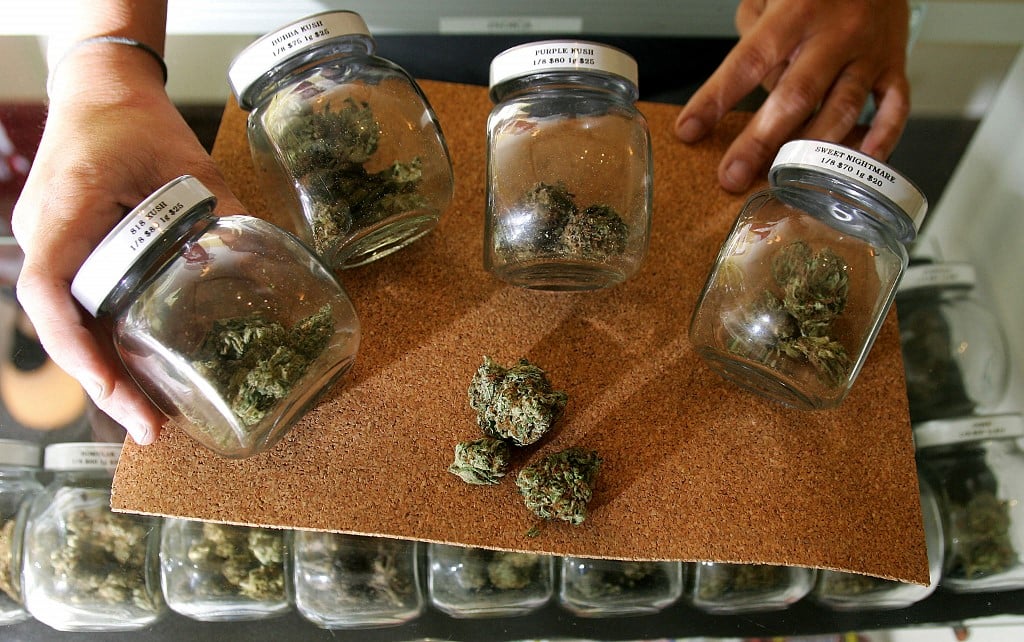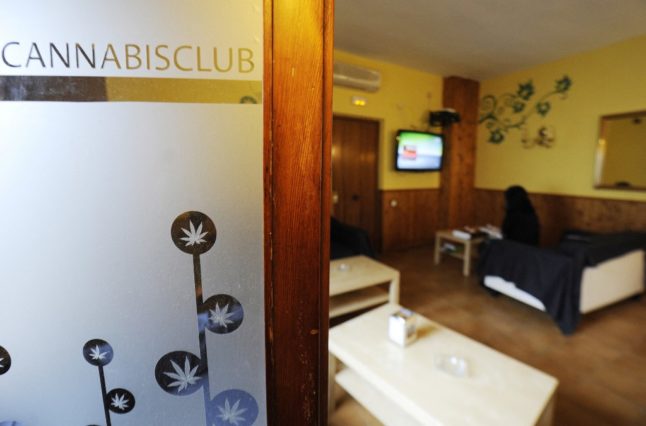In the past, Amsterdam’s famous coffee shops attracted cannabis users from across the world.
But a recent crackdown in the Dutch capital has led many to search for new places to enjoy a smoke and some weed-themed tourism.
In the last few years, Spain has emerged as another destination for travelling ‘stoners’, as well as a place where foreign residents can indulge without fear of ending up in jail.
The existence of cannabis clubs, or rather, associations – asociaciones cannábicas as they’re known in Spanish – is a draw for many, although they are often as misunderstood as the law on cannabis in Spain more broadly.
These aren’t simply shops that sell cannabis, or bars you can stroll up to and buy a joint from.
Rather, they are highly regulated, often secretive places that exist in a legal grey area. If you are interested in visiting one, whether on holiday or if you already live in Spain, there’s some rules you should know about.
The Local has broken down everything you need to know about cannabis clubs in Spain.
The law
First things first, what’s the law on cannabis in Spain in a broad sense?
Although there is some confusion among tourists, cannabis use in Spain is not legalised but decriminalised.
It is not illegal to smoke weed in your own home, or in other private property such as an association.
Attitudes to personal consumption are relatively lax in Spain, generally speaking, given that it is done on private property.
READ ALSO: What’s the law on cannabis in Spain?
Simply put: Spanish weed laws make the distinction between personal consumption in a public space and personal consumption in private.
Many foreigners don’t realise that it is illegal to smoke outdoors or in the street, as they may have seen locals or tourists smoking on a park bench, at a bar terrace or down at the beach. But this is illegal and, if you’re caught, punishable by fines. You’ll also have your stash seized by the police.
In fact, even possession in public is illegal. So, if you are stopped by the police for whatever reason and are carrying some cannabis with you, even if you’re not smoking it, you could be subject to a fine and will at the very least have your stash taken.
Cannabis clubs and associations
One legal loophole that exists in Spain is that of its famous ‘asociaciones cannábicas’. These are private member’s clubs where you can consume cannabis within the confines of the property.
Cannabis clubs are non-profit organisations created within the ‘right of association’ contained in Article 22 of the Spanish Constitution and the Organic Law 1/2002.
Cannabis clubs are usually set up to be like bars with music, and often have pool and foosball tables.
It is worth noting, however, that because of the legal ambiguity of these clubs, membership is not entirely risk-free and some are occasionally subject to seizure by police who try to exploit the legal grey area.
In Catalonia – the capital of cannabis clubs in Spain, where 70 percent of Spain’s clubs are located – Catalonia’s Superior Court recently ruled against them.

How to find them
As they exist in a sort of legal loophole, cannabis clubs are understandably low-key. You won’t see them advertised as you walk down the street, and often you won’t even find an address online.
In order to find one, you’ll need to do a bit of research. Search online for clubs in your area and you should find some listed. Some will have a phone number you can call, others just an email address, and you’ll need to make an appointment in order to visit.
In terms of physically finding the clubs, some are particularly secretive and refuse to give out the address via email or over the phone. In some cases, you’ll be given the name of a street and sent the exact address or building once you’ve arrived. The clubs can be discreet and hidden, so don’t expect a huge marijuana leaf or Bob Marley flag to guide you there.
READ ALSO: Pharmacies in Spain will be able to sell medical marijuana by the end of 2022
How to join
In order to join, often you’ll have to be introduced or referred by a current member. In some clubs, membership is by referral only, so if you’re just hoping to pop in on holiday it won’t be possible. Often these are the more local clubs for Spaniards and residents.
The clubs that do accept tourists will sometimes require you to make an appointment. Once you’ve found the place and arrived, you’ll need take the following documents to most clubs:
– Passport or ID
– Address (if you’re a tourist, the address of an AirBnB or friend’s house is often accepted, but not hotels)
– Membership fee (this depends on the club but is usually an annual fee of around €25 to €100)
It is worth noting that this membership fee, legally speaking, is not to pay for cannabis, but rather for your membership of the association and right to be a member – socio in Spanish.
How does it work?
So, you’re registered and now a socio. How does it work?
Cannabis clubs operate somewhat similarly to coffee shops in Amsterdam, or dispensaries in the United States, in that you enter and there’s staff working who can explain and recommend the different strains, types, and prices on offer.
You are then free to relax and smoke in the club, and make use of whatever facilities this club has. Most have a bar, TV screens, some of have pool tables and games consoles.

The rules
Often the rules depend on each individual club.
Generally speaking, the rules are as follows:
- Photos aren’t allowed.
- Guests are allowed, but usually have to be signed in with photo ID, and members have limits on how many and how often they can bring non-member guests.
- No underage guests.
- Limits on how much you can take from the dispensary (daily/weekly/monthly).
- You can’t take your cannabis with you when you leave, technically speaking (more on that below).
Leaving the premises
Now, here’s where things can get a little complicated. Remember the law on cannabis in Spain? Legal to smoke in private, but illegal to smoke (or even have on your person) in public?
Often when you join a club, the staff will tell you that you can only smoke your cannabis in the club and that you mustn’t take it outside the premises. Some are a little more relaxed, and say if you want to do that it is your decision – meaning basically that you’re on your own once you have left.
That means that, thanks to quirks of the Spanish legal system, you can legally smoke cannabis inside the association and in your own home, but walking between the two places with cannabis (possession alone, not smoking) is illegal.
Does it make sense? Not entirely. Is it the law? Yes. Cannabis clubs exist to try and create safe, legal spaces for people to enjoy smoking cannabis together, so it is recommended you use your discretion not to attract attention to the club or cause undue legal problems for it.
Simply put, the moment you step foot outside the association with cannabis on your person you are breaking Spanish law and putting the association at risk. In Spain the founders of some clubs have even gone to prison.
Note, it has also been known that plain-clothes police officers at times hang around outside popular associations and stop people coming and going in order to fine them. In Spain, fines (multas) for cannabis possession in public can cost you up to €600.
In any case, weigh up your options depending on where you are in Spain, ask yourself how likely is it that you will be stopped by police on your way home, and consider carrying a bag or Tupperware in a rucksack which will make the smell of the cannabis you’ve bought less pungent and noticeable.



 Please whitelist us to continue reading.
Please whitelist us to continue reading.
Member comments